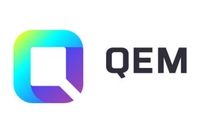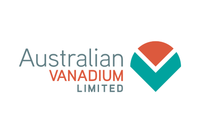Q&A with Bill Radvak, President and CEO of American Vanadium
The head of American Vanadium discusses his company’s goal of becoming a leading provider of energy storage and micro grid solutions in North America.
Vanadium Investing News (VIN) recently spoke with Bill Radvak, president and CEO of American Vanadium (TSXV:AVC,OTCQX:AVCVF). In the interview below, Radvak discusses the company’s recent memorandum of understanding (MOU), which it signed with Germany’s GILDEMEISTER energy solutions as part of its new goal of becoming a leading provider of energy storage and micro grid solutions in North America.
VIN: Why has American Vanadium, a resource development company, shifted focus to become an energy storage company?
Bill Radvak: We based our Gibellini project’s feasibility study on selling vanadium into the classic steel market, but we feel it’s best to sell our product into the highest-value market. Because we have very unique geology — a very clean sedimentary deposit — we’re able to use sulfuric heap-leach methodology to process the ore, and that is essentially what’s used in vanadium batteries; vanadium electrolyte is vanadium in sulfuric acid. So not only do we have a strategically located deposit, but we also have the ability to compete globally in terms of price on this high-purity electrolyte.
Yes, the battery storage market was in its infancy up until a few years ago, but about a year and half ago we saw the technology moving into the commercialization phase in Europe. Despite the overwhelming need, things have been much slower to develop in the United States. If we waited for the battery industry to develop in North America, then we’d be selling most of it into the steel business — and that is not a good return for shareholders.
VIN: Essentially, instead of waiting for the battery industry to develop in North America, your company decided “let’s build a domestic market for our product ourselves”?
BR: Yes. That’s when we started looking around the world to the leading battery development companies to propose a partnership. We believe we’ve found an ideal partner with GILDEMEISTER. I continue to be impressed with the completeness and perfection of their CellCube. It really is a finished product. It is a modular, remotely operated and completely environmentally controlled vanadium flow battery system that will last 20 years. It is fully scalable, cost competitive and in the market now in Europe.
VIN: What is American Vanadium bringing to the table?
BR: We have the only vanadium deposit of any size in North America and we expect that to be the case for a long time. Vanadium electrolyte, which we’re looking to produce at Gibellini, is 40 to 60 percent of the battery cost depending on the battery type. Vanadium prices have historically been volatile, with peaks of up to 400 percent in recent years. So if you’re selling these batteries and not controlling the supply of vanadium, the cost could drive you into the ground. We are providing vanadium electrolyte for these battery systems at a long-term, stable price. And our goal is to be the North American face of GILDEMEISTER’s CellCube storage technology.
VIN: You’ve recently met with New York state and city officials. What have you learned about their interest in energy storage technology?
BR: The purpose of the MOU was for both GILDEMEISTER and our management to explore what the American market primarily needs in the way of energy storage. The MOU is an opportunity for us to open up a manufacturing facility in North America and to provide the vanadium for our battery system sales. The first goal was to research the appetite for this storage solution technology.
We are focusing on New York, the home of Thomas Edison and the oldest and largest electric grid in the world. Half of the transmission lines are over 50 years old, and they need updating to the tune of tens of billions of dollars over the upcoming decades. They have made it very clear that energy storage is a key component of these upgrades. They want to introduce wind, solar and storage solutions rather than just increase the number of substations and production facilities.
VIN: I imagine the New York subway system alone must pull an extraordinary amount of energy.
BR: Yes. In fact, the New York subway system is the largest consumer of electricity in North America outside of the US military. What they are keenly interested in is having storage every 10 blocks along the subway so that all of the braking energy can be stored and used to propel the subway instead of dissipating in heat. It’s an incredible opportunity to improve energy efficiency and costs.
VIN: What’s been the reaction to the technology you’re offering?
BR: We’re talking to groups in downtown Manhattan who lost power for weeks following Hurricane Sandy and are now looking for storage solutions. They have nothing at all. So going in there with GILDEMEISTER’s CellCube technology and seeing their eyes light up at the opportunity to have a storage solution was very rewarding. We’ve met people here who didn’t know a solution like this existed. GILDEMEISTER has been selling this technology in Europe for the last 18 months. It’s now being accepted as a new product by the market and they are facing a huge ramp up in sales.
We’re extremely enthusiastic about this. When you look at the half-megawatt to 5-megawatt size, there really is no competition, and that’s what we heard from New York state and city officials as well. They are desperate for anything in that size range. We believe New York alone could consume 25 to 50 percent of our production, which is about 150 to 300 megawatts of storage a year.
VIN: New York City’s mayor, Michael Bloomberg, recently announced that he’s making changes to building codes that could create up to 10,000 electric vehicle (EV) parking spots with chargers over the next seven years. Does GILDEMEISTER produce such technology?
BR: It’s interesting that you mention that. GILDEMEISTER has produced an EV charging station that can be run off of renewables. It’s nice that everyone can charge their car at home, but when you’re running around, you want the ability to charge up if you need to. However, that puts more pressure on the grid, especially during peak hours, which goes against what EVs are all about. Renewables and storage systems can take that pressure of the grid. So what GILDEMEISTER has come up with is truly unique.
At its headquarters in Germany, Volkswagen (ETR:VOW) has installed one of these systems, and when Premier Wen Jiabao of China visited the headquarters with Chancellor Angela Merkel to sign a deal for a new VW manufacturing facility in China, the first thing they did was walk over to the charging station because it interested Wen. GILDEMEISTER’s got a very unique solution that has a CellCube in the back that can draw power off of both wind and solar. You can charge up to six vehicles at once off of renewables at the station.
VIN: How does the production timetable at Gibellini measure up to your battery production goals?
BR: So far at Gibellini it’s going extremely well with the permitting authorities. We’ve hired Ron Espell, a former corporate environmental director at Barrick Gold (TSX:ABX,NYSE:ABX), to the position of vice president of environmental. In a short period of time, we’ve filed our plan of operations and the initial reaction has been fairly solid. We are planning to be in production by the end of 2015. We’re looking to build a battery fabrication plant on the eastern coast, near the Northeast Corridor, which is likely to be our largest customer, and we plan to be in production before production at the mine begins. We’re securing vanadium from other sources for the interim period, and we don’t see a lot of risk in that given the price of vanadium is low right now.
VIN: One last question before I let you go. What excites you the most about this new direction for American Vanadium?
BR: It’s exciting that this very unique deposit in Nevada has given a little Canadian mining company the opportunity to become the leading energy storage company in North America. Given what we’ve seen in the last week since we announced our MOU with GILDEMEISTER, everything is pointing towards our ability to actually execute on that. Our goal is to have revenue from battery sales this year. The reaction in the first week from key government organizations has been extraordinary. They don’t have solutions, so they are desperate to get this in the door. If it proves successful — which we’re confident it will — we expect a fairly rapid uptake.
VIN: Thank you very much for speaking with me today.
BR: Thank you.
Securities Disclosure: I, Melissa Pistilli, hold no direct investment interest in any company mentioned in this article.
Editorial Disclosure: American Vanadium is a client of the Investing News Network. This article is not paid-for content.


